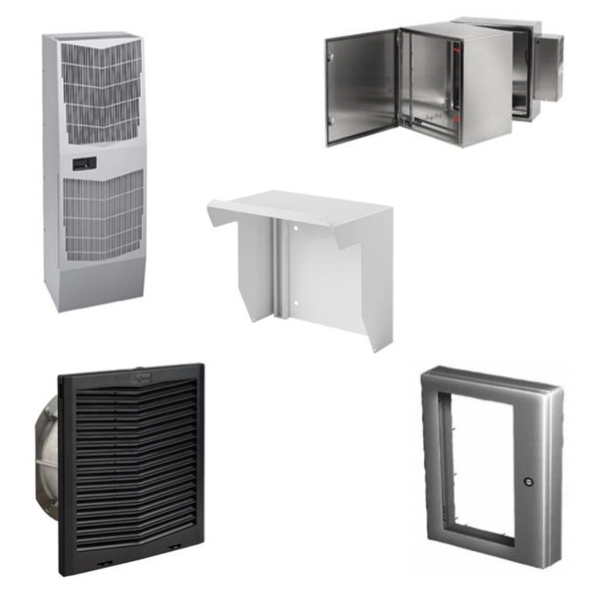Enclosure Accessories

Enclosure accessories play a vital role in improving organization, protection, and overall performance within industrial and commercial enclosures. RSP Supply offers a comprehensive range of accessories designed to support effective cable management, secure component mounting, and protection of sensitive equipment housed inside electrical enclosures.
Properly selected accessories such as mounting rails, cable management components, and protective covers help stabilize internal devices while shielding them from dust, moisture, vibration, and other environmental factors. These components are available in various sizes, materials, and configurations to ensure compatibility with different enclosure designs and application requirements. A well-organized enclosure not only protects equipment but also simplifies installation, troubleshooting, and ongoing maintenance.
When choosing enclosure accessories, it is important to consider the specific application and the demands placed on the enclosed equipment. Factors such as cable entry diameter, enclosure layout, and environmental exposure all influence accessory selection. Pre-designed accessories that meet industry standards can help streamline installation while ensuring consistent performance and compliance across a wide range of enclosure types.
FAQs
Q: What are enclosure accessories used for?
Enclosure accessories are used to organize cables, mount internal components, and protect equipment within an enclosure, helping improve safety, reliability, and ease of maintenance.
Q: What types of enclosure accessories are commonly available?
Common enclosure accessories include cable management brackets, mounting rails, protective covers, lighting fixtures, and various mounting and fastening components.
Q: Why is cable management important inside enclosures?
Proper cable management reduces clutter, minimizes stress on wiring, improves airflow, and makes installation and maintenance tasks more efficient.
Q: How do I choose the right accessories for my enclosure?
Accessory selection should be based on the application, enclosure size and design, cable entry requirements, and environmental conditions such as moisture, dust, or vibration.
Q: Do enclosure accessories need to meet industry standards?
Yes, many enclosure accessories are designed to comply with industry standards and regulations to ensure compatibility, safety, and consistent performance in industrial applications.
Why Buy Enclosure Accessories from RSP Supply
RSP Supply provides a wide selection of enclosure accessories designed to support reliable cable management, secure mounting, and equipment protection. Our product offerings are suitable for a broad range of enclosure types and applications, helping customers build organized, durable, and compliant systems. With knowledgeable support and dependable product availability, RSP Supply is a trusted source for enclosure accessory solutions.

